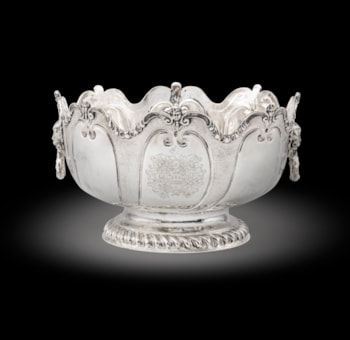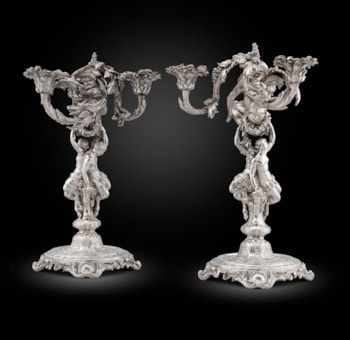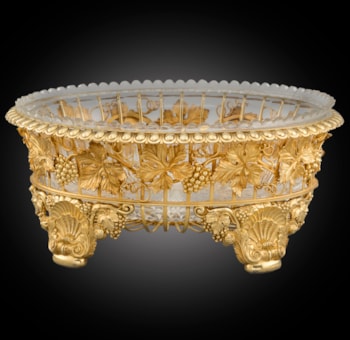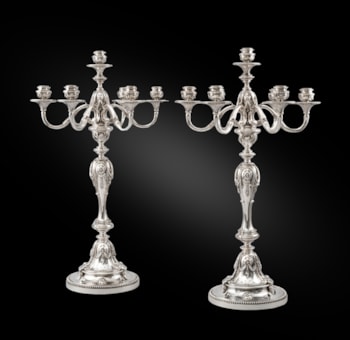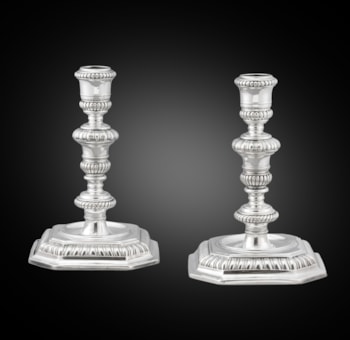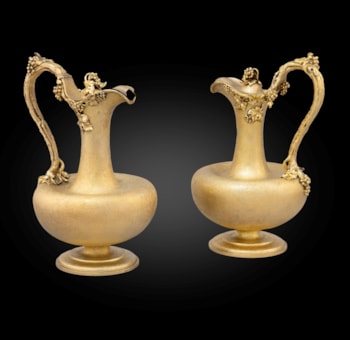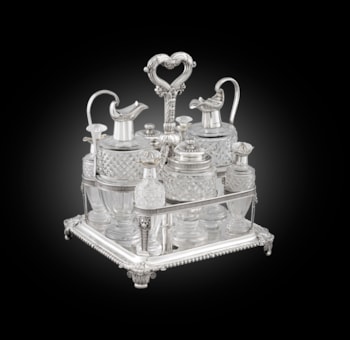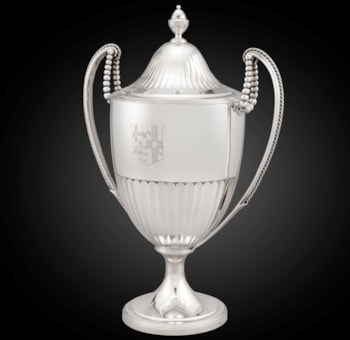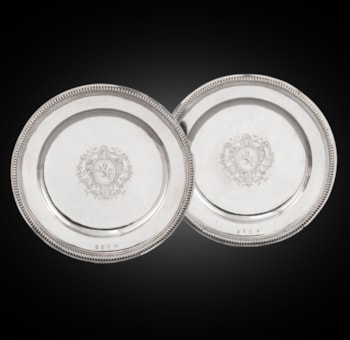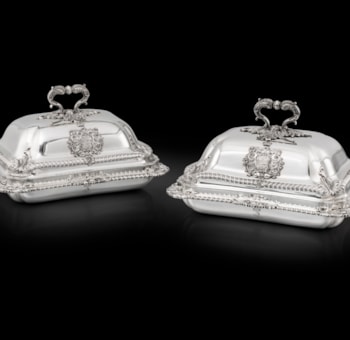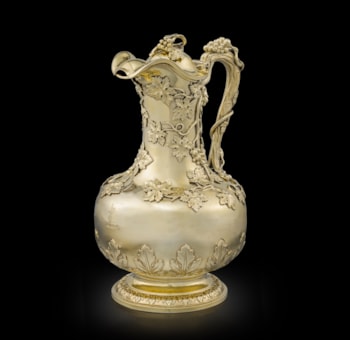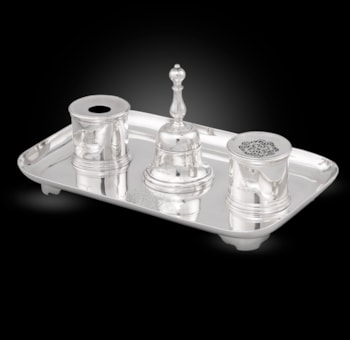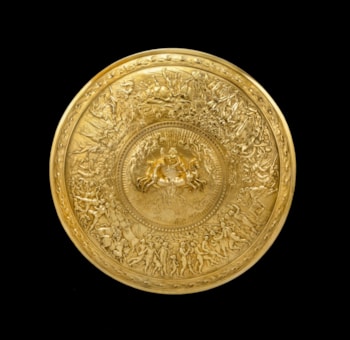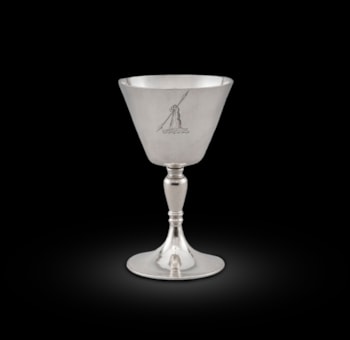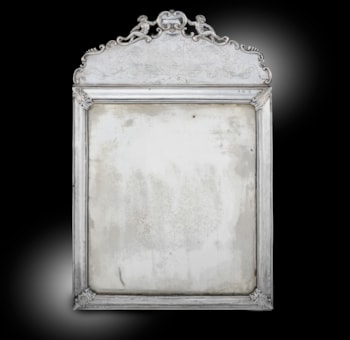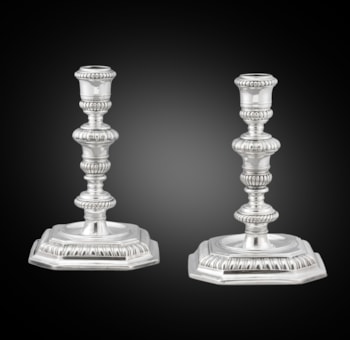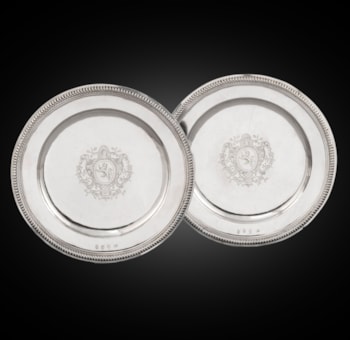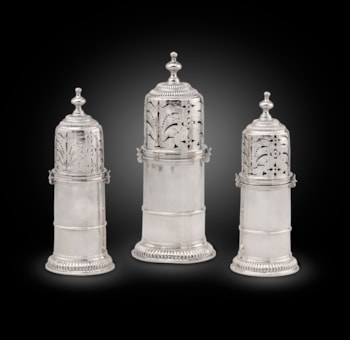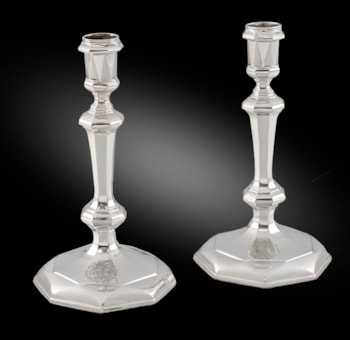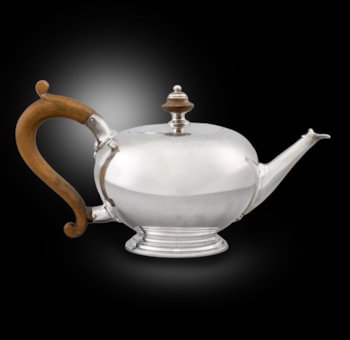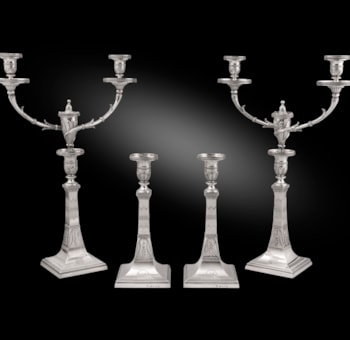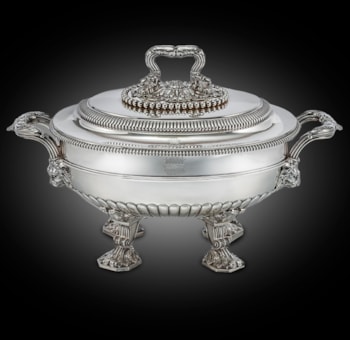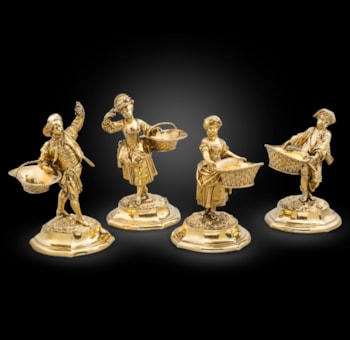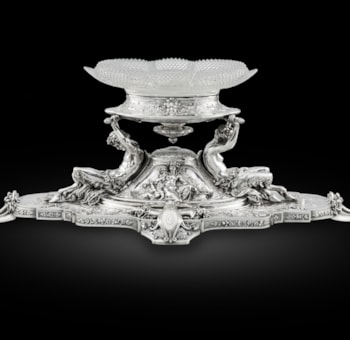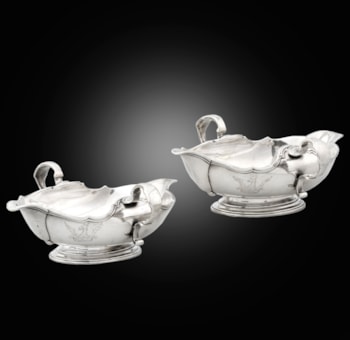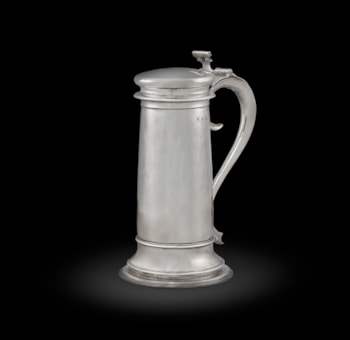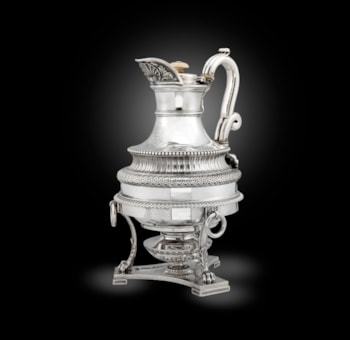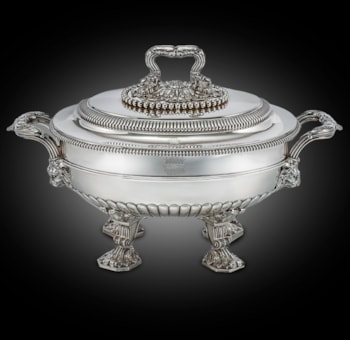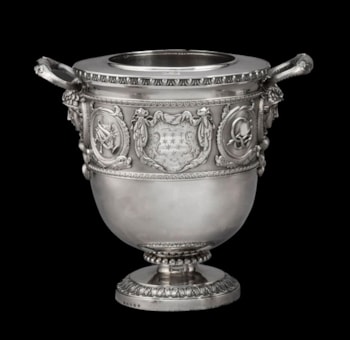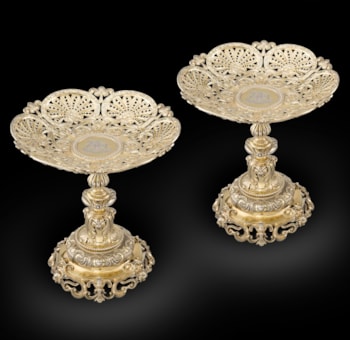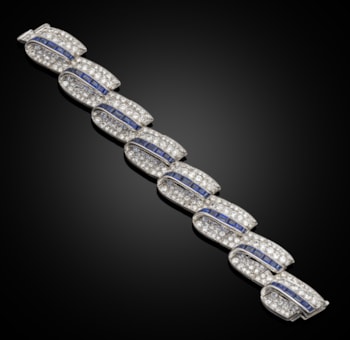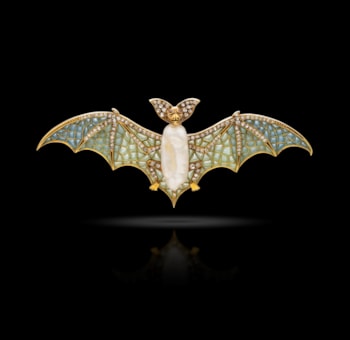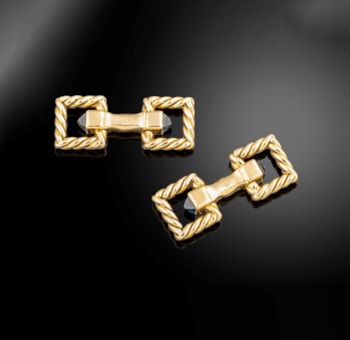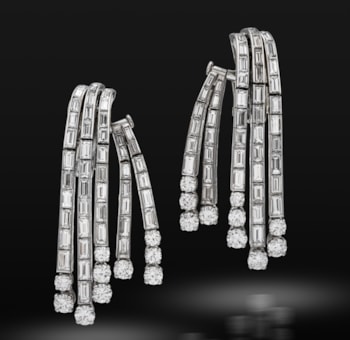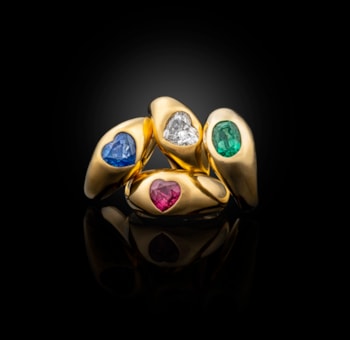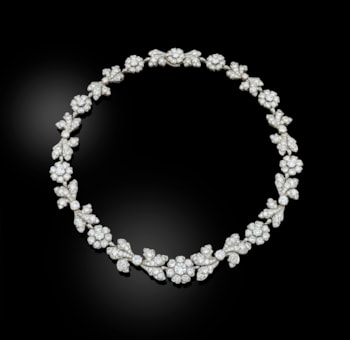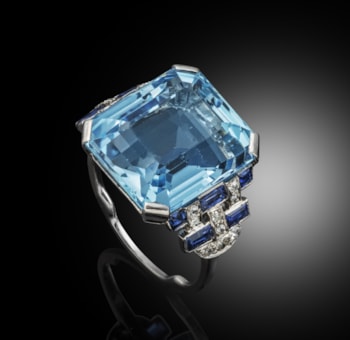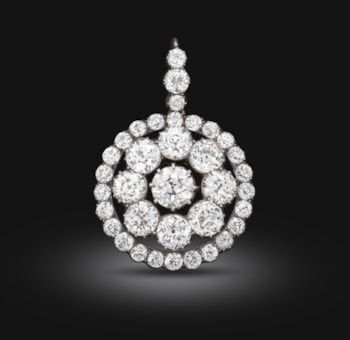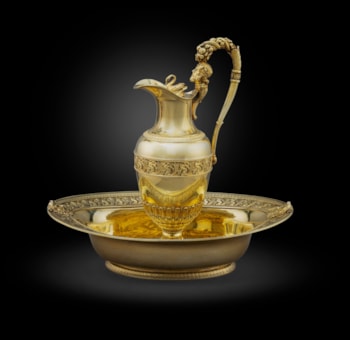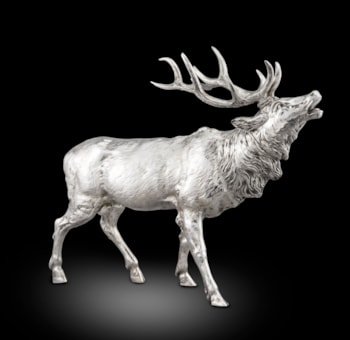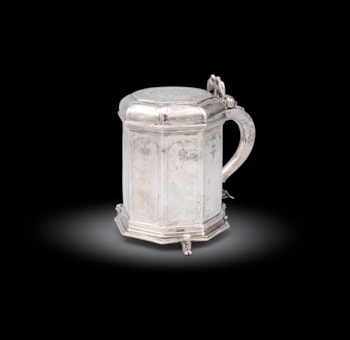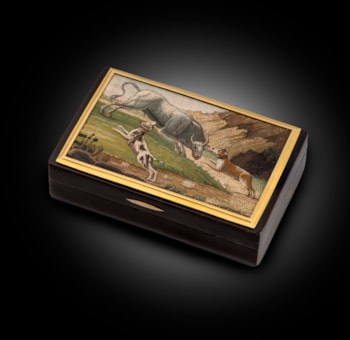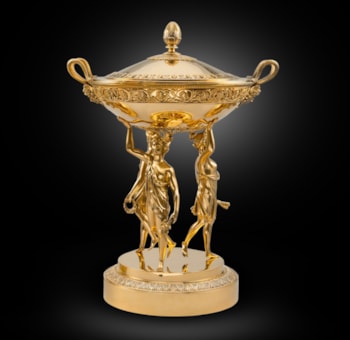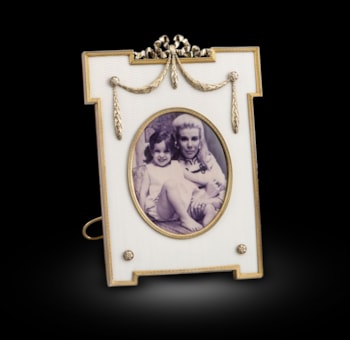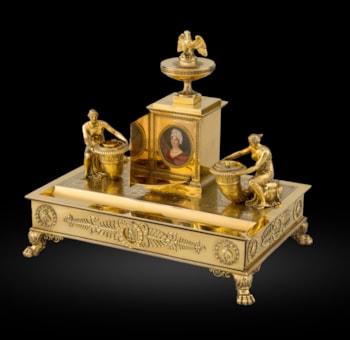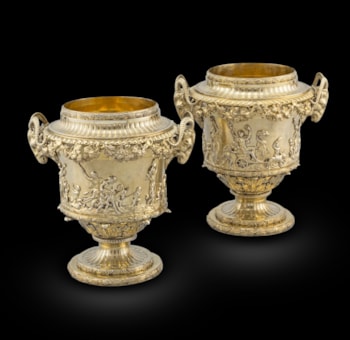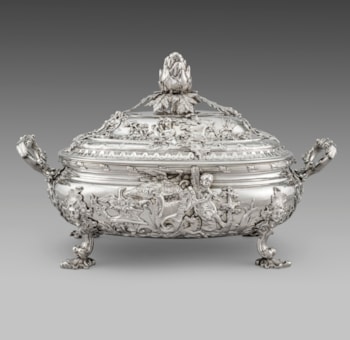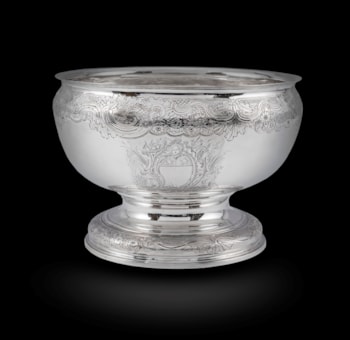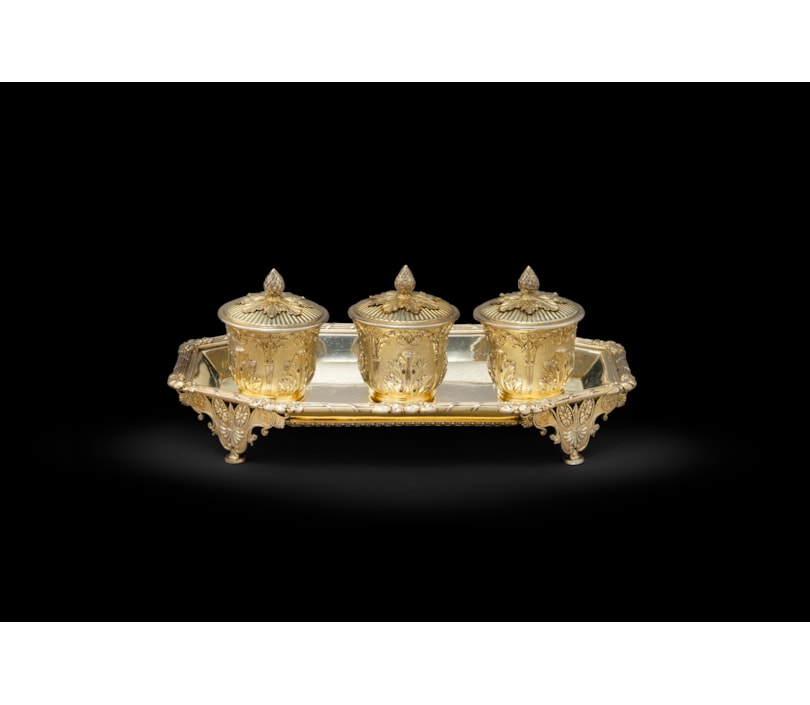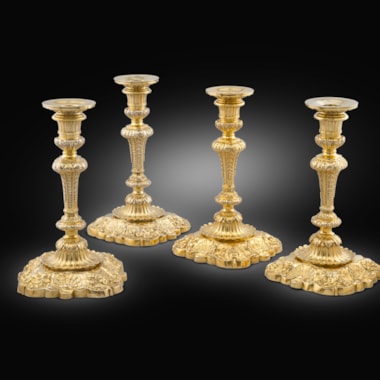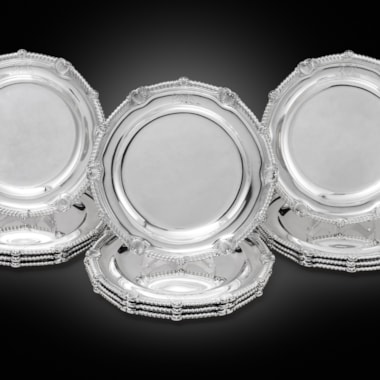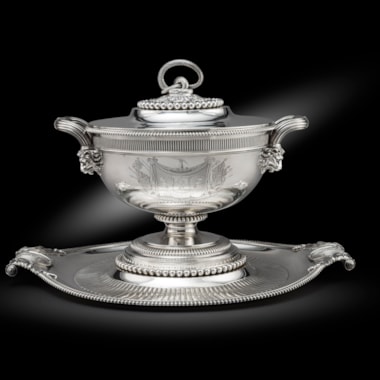The elegant simplicity of this inkstand is enlivened by gently interlaced honeysuckle and scrolling acanthus leaves. The model, with slight variations, was made in Scott & Smith's Greenwich workshops for the Royal Goldsmiths from 1804 onwards. A similar example of that year, presented to Georgiana Stanhope by her god. parents, King George III, Queen Charlotte and Princes Augusta, is in the collection of the Worshipful Company of Goldsmiths. It has reeded handles at each end, but the foliate decoration is identical. Another example is in the Victoria & Albert Museum.
Property of an American Collector, Christie's London, 15 June 2004, lot 26
Koopman Rare Art
Private Collection
The partnership of Digby Scott and Benjamin Smith produced some of the greatest silver works of the early 19th century. Scott and Smith jointly ran workshops located in Greenwich, England from 1802 to 1807 and during their brief partnership were the principal suppliers of silver masterpieces to the esteemed firm of Rundell, Bridge & Rundell. At the time London's most prestigious firm, these jewellers and silversmiths supplied the official plate ordered by the Lord Chamberlain's office, and were the official "Jeweller, Gold and Silversmiths to the Crown" from 1798 to 1843. Working in the cusp of the late Georgian and early Regency periods, the works of Scott and Smith often feature elements of the classical revival style such as grapevines and rams' heads, all crafted in exquisite, sumptuous detail. One of their most renowned collaborative efforts, the Duke of York Baskets, created for Frederick Augustus (1763-1827), second son of George III, is currently on display at the Powerhouse Museum in Australia.
You May Also Like




